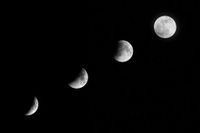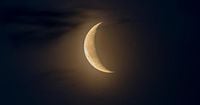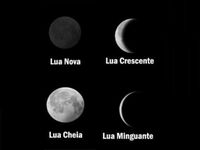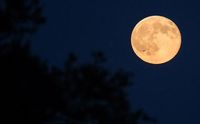On Friday, April 11, 2025, the Moon is in its waxing crescent phase, with 97% visibility and only one day left until it reaches its full phase. This phase is part of the lunar cycle, which includes several distinct stages: new, crescent, full, and waning. Each phase lasts approximately seven days, contributing to a complete cycle that averages 29.5 days.
The lunar calendar for April 2025 outlines the following key dates: the crescent moon appeared on April 4 at 23h14, the full moon is set to occur on April 12 at 21h22, the waning moon will follow on April 20 at 22h35, and the new moon will conclude the month on April 27 at 16h31.
The lunar cycle, or lunation, is the time interval between two consecutive new moons. This fascinating cycle has been observed and celebrated by various cultures throughout history, influencing everything from agriculture to folklore.
As the Moon transitions through its phases, it affects the Earth in numerous ways. The gravitational pull of the Moon is primarily responsible for the ocean tides, which have significant implications for marine ecosystems and coastal weather patterns. Additionally, some studies suggest that the Moon's phases may influence human behavior, with anecdotal evidence linking sleep patterns and moods to the lunar cycle.
Each phase of the Moon carries its own unique characteristics:
- New Moon: This phase occurs when the Moon is positioned between the Earth and the Sun, making it invisible to the naked eye. It's often associated with new beginnings and introspection.
- Crescent Moon: After the new moon, a sliver of light begins to appear, symbolizing growth and development. This phase is ideal for initiating new projects.
- Full Moon: The Moon is fully illuminated during this phase, representing culmination and clarity. It is often associated with heightened emotions and energy.
- Waning Moon: Following the full moon, the Moon begins to decrease in visibility, signifying a time for reflection and letting go.
The upcoming full moon on April 12 is particularly special, as it will be the apex of the lunar cycle for this month, providing a bright and beautiful sight in the night sky. Observers can expect a spectacular display as the Moon reflects sunlight in its entirety, creating a luminous orb that captivates stargazers.
Interestingly, the appearance of the Moon can differ based on the observer's location on Earth. For instance, in the Northern Hemisphere, the crescent moon appears with the illuminated part on the right, while in the Southern Hemisphere, it appears on the left. This phenomenon is a result of the differing perspectives of observers.
As we delve into the lunar calendar, it's essential to note the average distance from the Earth to the Moon is approximately 384,400 kilometers. This distance can vary slightly due to the Moon's elliptical orbit.
As the Moon continues its journey through the sky, many people find themselves reflecting on its various phases and the cycles of nature. The lunar phases not only serve as a guide for agricultural practices but also inspire cultural traditions and seasonal celebrations.
In conclusion, understanding the lunar cycle can enrich our appreciation of the natural world. Whether through planting crops in accordance with the Moon's phases or simply enjoying the beauty of a full moon night, the lunar cycle remains an integral part of life on Earth.









